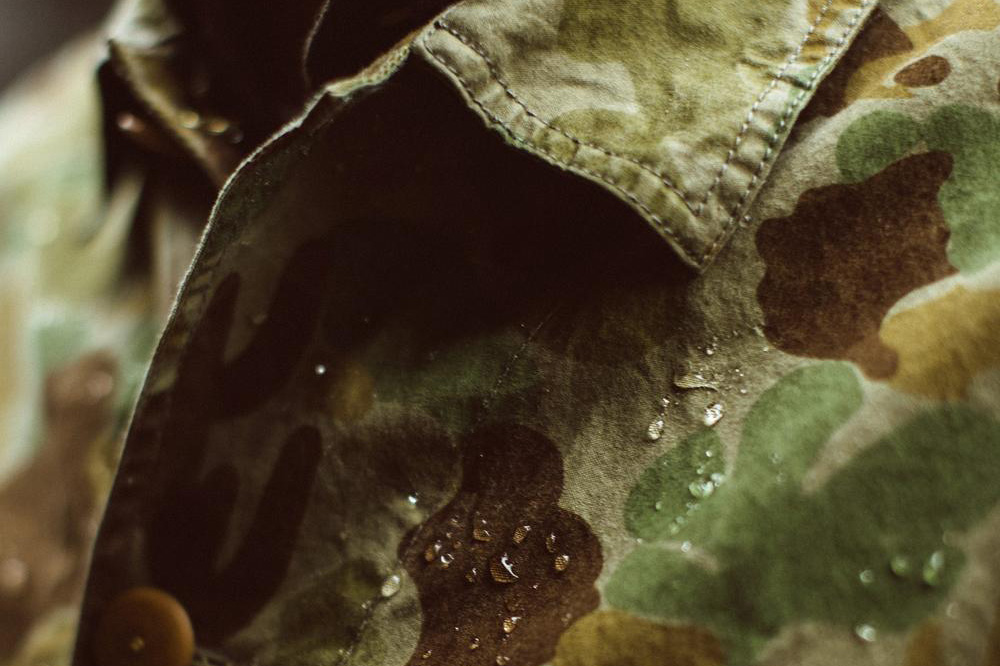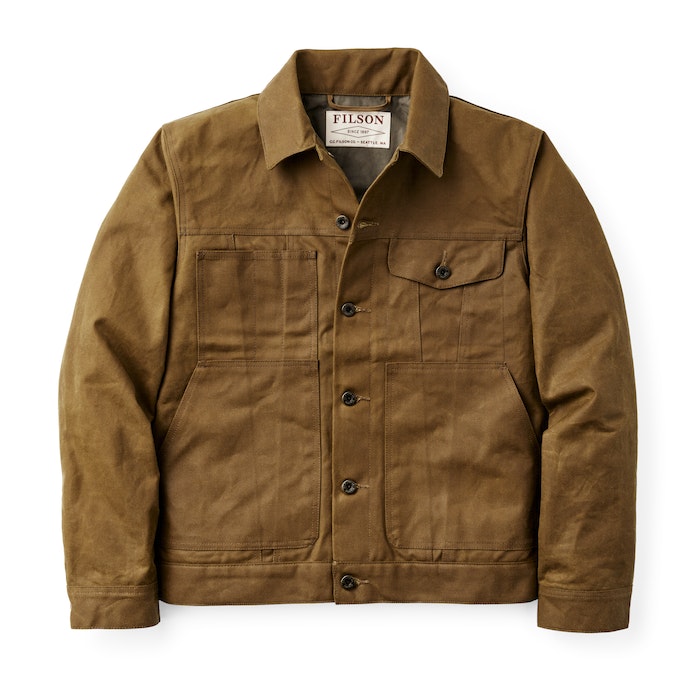
Modern science has created fabrics that are remarkably light and breathable while providing complete protection from the elements. The functionality of these advanced materials can’t be denied, but they lack the texture and character of those old-fashioned fabrics. A well-made and properly maintained waxed jacket provides both exceptional protection from the elements and a rugged beauty that modern science cannot match.
Talk about fashion meets function. If you prefer a more charismatic fabric, look, and style for your outerwear, then a canvas jacket or cotton field jacket is the way to go. If you are in the market to make an investment in a stylish but sturdy waxed canvas jacket, we’ll take you on a ride about how these classic jackets came to be and the best ones for you to shop for.

A bit of background on waxed canvas jackets
Waxed cotton jackets come in a wide variety of styles designed for a multitude of uses, but they all have one key attribute in common. Whether it’s a parka or an English motorcycle jacket, all waxed cotton develops a rich patina with age. This patina is similar to leather and presents a texture that is constantly evolving to the body shape and usage of the owner. This means that the more you wear the jacket, the more it takes on an appearance that is completely unique and customized to your body. That whole “fits like a glove” thing applies here.
The history of this fabric and how it became a menswear classic is as interesting as the properties of the fabric itself. There are good reasons why waxed cotton has stuck around for over a century as one of the essential men’s outerwear options, despite all the textile innovations that have happened over time. So, let’s take a look at where this legendary fabric came from, how it went from strictly utilitarian to essential fashion, and where to get your own waxed cotton jacket right now.

Origins: Born of the sea
Sailors have known for centuries that wet sails hold the wind better than dry sails, but wet sails are heavier and add drag to the ship. So, in the early 1700s, English sailors developed a way to saturate sail cloth with oil. This added the wind-catching property of wet sails with much less weight. It also made the sails water-resistant, preventing them from taking on extra weight.
Eventually, sailors began to cut capes and hats out of the same sailcloth to produce weather-resistant clothing. The oiled sailcloth yellowed with time, and this was the origin of sailors wearing yellow jackets and hats. Linseed oil was used from 1795 until the 1920s when the English started using paraffin wax derived from petroleum. Paraffin wax has remained the industry standard to this day, although you still find cotton that has been waxed with natural beeswax.

From utility to fashion: McQueen and the Queen
In 1894, Barbour & Sons became the first company to commercially produce waxed cotton jackets. Waxed cotton jackets are almost synonymous with Barbour jackets because the company not only invented them, but they were the first waxed cotton jackets to transition into popular fashion. Barbour started out by making clothing for farmers and gamekeepers. Their original designs featured a high collar or hood and fell below the knee for maximum weather protection. A cropped version was developed in the early 1900s to allow for riding horses and tractors.
This hip-length barn coat from Barbour, known today as the Ashbey and Bedale models, became a favorite of the English royal family in the 1970s and 1980s. The speculation is that Prince Charles, Queen Elizabeth II, and other royals began wearing this working-class jacket as an attempt to connect with the common citizens of the United Kingdom. Regardless of their intentions, Barbour jackets became a staple of first English and then American upper-middle-class fashion in the 1980s.
Barbour is also responsible for inventing the second most popular style of waxed cotton jacket: the English motorcycle jacket. In the 1930s, as motorcycles became popular in the UK, Barbour created a jumpsuit made out of waxed cotton with reinforced shoulders, elbows, and large cargo pockets placed for easy access while on the bike.
These suits became the official outfits of British moto teams in the 1950s, then the Americans in the 1960s, which led to the top half of the suit being cut off into a jacket and branded as the Barbour International jacket. After notable motorsports enthusiast and actor Steve McQueen rode with the American team in 1964, the Barbour International jacket became an instant men’s canvas jacket icon.

On patina: To re-wax or not to re-wax?
As the wax that sits on top of and within the fabric shifts and sheds off, the waxed cotton develops a patina. The highly developed wax used in waxed cotton (unlike candle wax) is not entirely solid. This allows the wax to move with the cotton, preventing any stiffness. However, this also means the wax will gradually wear away due to exposure to the elements and from the material rubbing against itself and other objects. Small color variations will start to form where the wax recedes and collects, popping up in the shape of spots and lines.
The first places to wear away will be the shoulders from weathering and elbows from friction. A majority of the patina markings will depend on your body type and how you wear the jacket. These markings add unique character to your jacket and have led to a debate among waxed cotton enthusiasts about whether or not to re-wax your jacket. The obvious benefit of re-waxing is maintaining weatherproof integrity and extending the life of the item. If you don’t re-wax every couple of years, or once a year with frequent wear, then water will seep through your jacket, and body heat will leak out.
The anti-waxers will tell you that re-waxing undoes all the beautiful patina you worked so hard to develop. However, not all the aging is lost in the re-waxing process. Think of it like pouring lacquer over aged wood. You’ll have a new finish, but all the deep-set texture within the wood will just be better preserved. So routine re-waxing will undo minor patina, but over the years you’ll see a more permanent, deeper, and richer patina set in.

If you decide to re-wax, here’s how
Once you go ahead and make the decision to re-wax your jacket, it goes without saying that you need to do it right so you don’t ruin it. Thankfully, the process is relatively simple and can be done in just a few steps.
- Clean the jacket with a damp cloth or sponge to get rid of any dust or other material on the outside of the jacket.
- Prepare your wax. Most jacket makers such as Barbour make their own jacket wax, but there are other brands as well. Jacket wax comes in two forms, some have to be softened in the tin by placing it in warm water and others come in bar form, which needs to be softened by a heat source, such as a hair dryer.
- Spread the wax onto the jacket, making sure to apply an even coat and make sure to cover the seams. If you are using wax from a tin, you can apply it with a clean rag or a sponge. For wax in bar form, simply rub the softened bar directly onto the jacket. You can then use a hair dryer to further melt the wax into the fabric.
- Dry the jacket for at least 24 hours to make sure the wax has set. While it is drying, keep the jacket away from any other clothing items to prevent the drying wax from staining them.

The mill: Millerain
An article about waxed cotton jackets wouldn’t be complete without mentioning British Millerain. The company, which was established in 1880, is the textile mill that produces the cloth for some of the best-waxed cotton jackets that are made by companies that don’t produce their own fabric — which, frankly, is most of them. What Horween is to leather, British Millerain is to waxed cotton: a trusted mark of top quality. Any time you are checking out a jacket, and you see that the fabric comes from British Millerain, you know that you’re getting a high-quality garment. Always check the label.

The classics: Top brands for waxed cotton jackets
Barbour
Barbour is the original brand and has more heritage and prestige than any other waxed cotton jacket company. They’re the brand people tend to think of when they hear waxed cotton, and for good reason. Their jackets aren’t necessarily the highest quality, but a Barbour jacket is an investment piece that will last you decades if taken care of properly.

Belstaff
Belstaff is a bougie British motorcycle jacket company that makes a broad range of waxed cotton, leather, and modern fabric jackets. However, they are most well-known for their Trialmaster British moto-style jacket. If you’re going to spring for a Belstaff, then this is the model to go with.

Filson
Getting their start in the Yukon Gold Rush in 1897, Filson specializes in gear for those of us who hate being inside. Started by C.C. Filson to withstand Pacific Northwest weather, their clothing and outerwear are made of the finest Mackinaw wool. Their products are even trusted by U.S. Forest Service personnel. Their Short-Lined Cruiser is one of their most popular pieces — and great for layering.

Flint and Tinder
Flint and Tinder is a relative newcomer to the waxed jacket game, but they have certainly carved out a name for themselves. As a U.S. company, they designed their signature jacket with a distinctly American look in mind, based on a classic trucker jacket. Their flannel-lined waxed trucker jacket has been the best-selling outerwear item on Huckberry for years now, so it must it pretty good.

Peregrine
Peregrine has been around for a long time (longer than Barbour, actually), but they are the lesser-known heritage British outerwear company. This is a shame because their production quality is top-notch. They produce their goods in much smaller batches than Barbour or Belstaff, so if you see something you like, you should act quickly because of the limited stock.
You know the history, you know the details, and now you know the best-waxed cotton jackets to look for when you decide to add one to your wardrobe. A waxed canvas jacket is a bit of an upfront investment, but once you have one in your closet, you’ll thank us for letting you in on all of the information.



